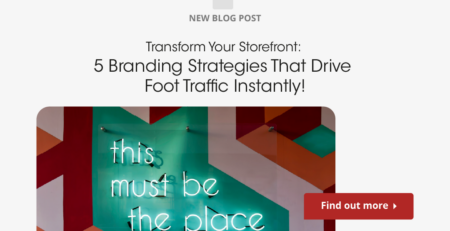Rise of the Influencers: Using Pop Media in Your Marketing
One of the most visible effects of pop media like Instagram, YouTube, TikTok, and Facebook has been the development of influencers. Once upon a time they were normal users who happened to mention brands in their content – now, becoming an influencer is a goal unto itself and, as micro-influencers continue to show their value, perhaps even a viable career path.
How do these influencers work? And are they as effective as many brands have come to believe? One thing is for certain: the popularity of influencers is still on the rise. Use this guide to learn everything brands need to know about influencers and a few tips for including them in your media mix.
What Is An Influencer?
In the sense that people have long been listening to celebrities and public figures, influence has been an asset for millennia. The term ‘influencer’ the way it’s used in marketing today only started appearing in the last decade or so as technology-enabled everyday users to create their own content.
At first, the only thing people could reliably create online was text-based information. Blogging gained traction as people with niche interests or lifestyles began showcasing their experiences in journal format. Eventually, the focus shifted to the posters as a kind of character, an important step toward the influencer marketing we know today.
Photo and video blogging were the next big developments. For a brief moment, these were still primarily tools for everyday people to make content about shows, hobbies, and other topics they were intimately familiar with. Mentioning brands was incidental and unpaid.
Then brands began to realize these were new advertising channels with massive potential. When social media took off, celebrity spokespeople used their accounts to make product endorsements. Smaller accounts owned by everyday people were still largely seen as the more authoritative source of information.
So that’s where the sponsorship money started to go. In much the same way that athletes pick up brand sponsors when they become successful, bloggers and other content creators started to get picked up by companies who wanted to put their brands in front of more viewers.
Influencers are people who receive money from brands to promote particular goods, services, or ideas on the internet. While a typical Instagram influencer typically appears to be young and interested in the latest and greatest technology, plenty of influencers across various platforms are selected because they represent different demographics and areas of interest.

Social Media vs. Pop Media
The socialization functions on websites like YouTube, Twitter, or Instagram are still an important part of the user experience but they aren’t the end-all, be-all of the site the way they were on early Facebook. Content has risen in importance while more traditional social media functions aim to support sharing and engaging with content.
This isn’t the fault of brands for hiring influencers, either. In large part, users of these sites are primarily interested in content first and socializing later. But each of these goals has different staying power – in our era of Non-Social Social Media, as the article calls it, most people are coming for the content and remaining on the site for the sense of community it offers.
Nonetheless, it’s helpful to differentiate the way social media sites are working now and how that’s different from the way they’ve worked in the past. Instead of being the singular destination for visitors, sites are tied in with other platforms, content sites, and other social media. Some of it is social but most of it can’t be called social by any stretch.
Since all of these sites are merging and so many internet users have an omnichannel experience of the web, it’s helpful to refer to all popular forms of internet usage as pop media.
Content Is King
On all of these sites, people are searching for some kind of information. Maybe they start by typing a question into a search engine or maybe they go to a streaming site or scroll through a feed, but they’re almost always looking for content that appeals to them.
The savviest brands realized this long ago, which is why you see companies sponsoring outreach and educational programs or hosting blogs and social media accounts that highlight their expertise and aim to create a more informed consumer for their product.
Most of this kind of content is given for free to promote interactions with the brand. Ideally, engaging with this informative content will lead to conversions where people browsing the site will become subscribers or customers. But even if it doesn’t, providing useful resources is good branding because it puts the company in a positive light and may prompt brand recall when users need that product or service in the future.
Either way, the focus on content is one of the reasons why influencers have become part of the media mix for so many brands. Before they become influencers, these users are highly active on social media and perceived as “verbal, smart, ambitious, productive, and poised” by their audience. In many cases, the content they make is the reason people keep returning to the service or platform in the first place.
On today’s ad-saturated internet, getting people to pay attention to your messaging is often the most challenging part of the marketing process. Sponsoring content is not only a great way to make authentic inroads to your target market, but it’s also mutually beneficial.
Creating Authentic Advertising
Maybe some brands are out of touch but that’s not the main reason authenticity is so hard to come by. A greater cause is that brands simply don’t look at the internet the same way everyday users do. It’s a source of fun and information for users and a vehicle for ads and conversions for businesses.
Are those two needs opposed to one another? Not directly, but they’re not naturally aligned, either. Making the most of pop media as an advertising resource can destroy the user experience by overloading sites and consuming too much bandwidth with ads. Consumers are wise to these problems, which is one of the many reasons ad blocking technology is so widely used.
Furthermore, ads that block content and forced ads are broadly viewed as having the highest annoyance factor. Affiliate marketing and influencer marketing are just the opposite – even when there is an explicit endorsement or native ad in the middle of content, it’s generally viewed as less intrusive and more tolerable than forced ads, pop-ups, or banners.
That’s because influencers have their own individual brands. Typically these are crafted over time through the use of pop media platforms. It’s the reason why things like lifestyle branding work with influencers. They start with their own brand and let other brands tap into it.
Influencers’ authenticity is accepted because they have proven themselves. They’re credible sources of information because they have been in the past. The existence of advertising funds or free products can corrupt their authentic image, although that’s increasingly not the case. Many influencers gain sponsorships by doing some promotional work for free and using that to demonstrate their use to brands who give them real sponsorship deals in the future.
How To Gauge Success With Influencer Marketing
What does a promising influencer look like? The first thing you need to know is that it’s not all about the number of followers they have. Particularly relevant with the rise in click farms that gather reactions and followers on pop media sites, the follower number is just one figure among many to measure the success of influencers.
Here are some others to keep in mind when looking for effective influencers:
- Reach
Who saw a post? How many accounts, what kind, and are they always the same? Many pop media sites have specialized ‘areas’ where users with similar interests primarily interact with one another – breaking through these de facto barriers is an important indicator of reach and broad appeal.
- Engagement
Most if not all pop media sites now give users the ability to like, comment, and share posts. Brands want to see this kind of action with influencer content because it means that users’ interests were piqued enough for them to take action. This is one area where the influencer and the brand have their interests perfectly aligned.
While it is one of the most important KPIs for influencer marketing, engagement isn’t the only one. Look for substantial engagement like questions and follows on the brand’s social media accounts.
- Site Traffic
Companies with a strong internet presence can use the traffic on the brand’s main site as a key performance indicator. Although directing viewers to a corporate website can come across as a bit hackneyed for some influencers, it is frequently a natural long-term result after several influencer marketing campaigns.
eCommerce sites with subscription-based models or a wide array of available products are most likely to see an increase in site traffic after an influencer marketing campaign. No matter what kind of business you are, though, it’s important to remember that the site traffic is unlikely to increase early in an influencer-brand relationship.
- Sales & Touches
Like site traffic, increased sales are more of a long-term goal with influencer marketing. Influencers might drive some users to buy or register for a service immediately, but sustained sales increases are usually not immediate.
Touches are frequently minuscule interactions between a brand and individual members of its target market. This is a great metric in the earlier stages of an influencer marketing campaign. It could take several touches before you get a conversion or sale.
Attribution In Influencer Marketing
Most companies that have successfully managed campaigns before are probably more used to the affiliate marketing model. In the affiliate marketing model, third parties are hired to promote the parent company and paid a commission rate based on the number of purchases made.
Amazon has one of the most well-known affiliate marketing programs today. You’ve likely seen websites that have product reviews or informative guides that bear some kind of affiliate notification stating they may make a commission on purchases made through their site or something to that effect.
Measuring the number of sales made through an affiliate is done with tracking methods in the links. While influencer marketing is meant to increase the reach of the brand more than it directly compensates the influencer for each new sale, tracking is still a viable method for measuring the success of influencer marketing campaigns.
Attribution based on touches and touchpoints (the reason for the touch) is important for companies with a wide media mix. While marketing is increasingly digital-first, other channels are still a necessary part of a healthy media mix.
You can use a few different rules to call which touchpoint should get credit for a sale or conversion.
- First Touch – The first touchpoint gets 100% of the credit
- First Click – The first click gets all the credit
- Last Touch – The last touchpoint to get an interaction gets credit
- Last Click – The last click gets 100% of the credit
We’ve already mentioned that modern consumers need several – sometimes over 50 – touches to reach a conversion or sale. Because of this rising trend, first and last-touch or click attribution models don’t work as well. All the work done by influencers, social media campaigns, and other more traditional forms of advertising disappear if one click or touch determines which touchpoint gets full credit for sales.
Thankfully, influencer marketing doesn’t normally rely on sales and conversions as directly as affiliate marketing does. Include impressions and user experience into your attribution model and you’ll have a more realistic idea of how successful your influencer marketing is.
Finding The Right Influencer For Your Target Market
If you want your influencer marketing to be as effective as possible, you need to find an influencer that aligns with the interests and personality of your target market. That means you should take time to do some user research and social media analysis to find out what people like and engage with online.
It has lots to do with what kind of product or service you sell. If you have a lifestyle brand, then it may be easier to find an influencer that aligns with it. Companies concentrating on more singular products and services will have to be on the lookout for people who have garnered attention with content that is somehow related to the brand.
For example, many streamers and YouTube content creators are sponsored by brands that sell products related to the content of their channels. Cooking hosts might pair with grocery delivery services or liquor brands while podcast hosts are freer to take sponsorships from a wider array of businesses.
Authenticity is key when selecting an influencer. Your target market not only has to trust this source as knowledgeable, but they also have to like the person or people to be influenced by their thoughts and opinions.
The micro-influencer or nano influencer is the latest trend. Big accounts run by celebrities are good for some brands, but many times the accounts with a smaller following (say, 4k – 5k) have a more dedicated fanbase that can be brought over to the brand sooner.
In this way, influencer marketing is a promising avenue for reaching more niche sections of the target market than were likely to be possible with more traditional methods. As long as you do research to find out how your target market behaves, there’s bound to be an influencer who fits the bill. More authentic marketing is the key to reaching generations who have grown up with the internet and the spiritual facelift many brands desperately need.

Conclusion:
Brands that want to diversify their media mix to match the modern internet should look into influencer marketing. Content creators driving traffic on popular media and social networking sites are increasingly seen as voices of authority when it comes to life hacks, product reviews, and explainers on a variety of topics.
These influencers are so well-liked because they begin with and center a legitimate interest in what they’re presenting. While they may not have any expertise per se, they have a human aspect that is sorely lacking from most marketing outreaches. Brands can take advantage of this to everyone’s benefit – the brand gets better messaging, the influencer can concentrate more on their content, and the viewer gets higher-quality information that directly impacts their perception of the influencer and the sponsoring brand.











